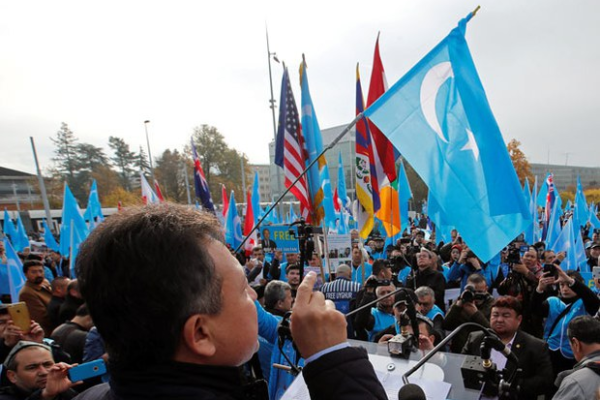Myanmar guerrillas attack junta military headquarters in Mandalay
Pro-democracy insurgents battling Myanmar’s junta fired rockets at the military headquarters in the city of Mandalay, the group said on Monday, the latest in a series of strikes at the heart of the military’s command structure. There was no immediate confirmation from the junta of the attack on the Central Military Headquarters in Myanmar’s second-biggest city early on Sunday, which an activist group called Brave Warriors for Myanmar (BMW) said its members carried out with 107 mm rockets. “Two of the rockets hit a building where junta troops who are about to attack in northern Shan state are staying,” a member of the group who declined to be identified for safety reasons told Radio Free Asia. He said some troops were believed to have been wounded in the attack but the extent of casualties and damage were being investigated. Those who carried out the attack escaped, he said. RFA tried to contact the junta spokesman for Mandalay region, Thein Htay, by telephone to ask about the reported attack but he did not answer calls. The headquarters is in the heart of Mandalay, on the site of what used to be the walled palace of Myanmar’s kings who were deposed by British colonialists in the 19th century. The place was largely destroyed during World War II but the site is of symbolic importance for the nation. A resident of the area, which is known as Aungmyaethazan township, said he heard loud explosions early on Sunday. “I heard three or four blasts at around 2.28 a.m. on Sunday morning, they were quite loud, from a big weapon, I think,” the resident, who declined to be identified for safety reasons, told RFA. Myanmar’s military has been facing setbacks in fighting in several parts of the country over the past year, at the hands of its old ethnic minority insurgent enemies and new pro-democracy People’s Defense Forces, or PDFs, set up by activists largely from the majority Burman community, who took up arms after the generals overthrew an elected government in early 2021. Despite the setbacks, which have included the loss of a regional command headquarters in Shan state, northeast of Mandalay, and of a naval base in Rakhine state in the west, the military remains in control of major cities and can unleash devastating strikes with its air force. PDF fighters have launched several rocket attacks on military bases and junta leaders in the capital Naypyidaw as well as in the main city of Yangon. The junta has condemned what it calls “terrorist” attacks and arrested several groups of plotters. The BWM member said his group and an allied faction called the Shadow Mandalay Group had attacked the Mandalay base twice before, on Dec. 21, 2023, and on Sept. 3 this year. The BWM also helped plan a rocket attack on an air base in Naypyidaw in July, the group members said. PDF insurgents and their ethnic minority force allies have also captured a growing number of towns in the Mandalay region including Mogoke, Thabeikkyin, Singu and Tagaung. Anti-junta forces are also threatening Pyin Oo Lwin, a hill town 64 kilometers (40 miles) east of Mandalay that is home to the military’s Defense Services Academy. RELATED STORIES A new generation in Myanmar risks their lives for change No limits to lawlessness of Myanmar’s predatory regime Month of fighting leaves once-bustling Myanmar town eerily quiet Edited by Mike Firn We are : Investigative Journalism Reportika Investigative Reports Daily Reports Interviews Surveys Reportika


